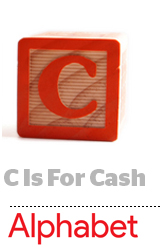 Alphabet’s second quarter revenue hit $32.7, a 26% jump from the same period last year, according to its earnings report on Monday.
Alphabet’s second quarter revenue hit $32.7, a 26% jump from the same period last year, according to its earnings report on Monday.
The advertising platform is “firing all cylinders,” Google CEO Sundar Pichai told investors, with ad revenue reaching $28.1 billion in Q2 2018, compared to $22.7 billion in Q2 2017.
This is the second consecutive quarter where Google-owned media drove a disproportionate share of Alphabet’s revenue growth. Publishers in the Google network saw about $600 million more than during the same period last year, while Google properties increased revenue by almost $5 billion.
Alphabet stock had fallen a smidge in the past week after the European Union levied a $5 billion fine against Google. But shares jumped to all-time highs in after-hours trading, after Google reported continued strong revenue growth.
Aside from back-to-back multibillion-dollar fines and potential scrutiny under GDPR, Google’s most important expense growth could be its traffic acquisition costs (TAC), which are the costs for Google to extend its search and advertising services to, say, a retailer’s on-site search bar or to iOS and Siri responses.
Google’s TAC, as a percentage of overall ad revenue, ticked up to 23% from 22% a year ago. Pichai and CFO Ruth Porat warned investors that the percentage will continue to rise for the foreseeable future, because mobile search has higher acquisition costs.
But higher TAC isn’t necessarily a bad thing for Google.
When Mozilla released a new Firefox browser last year, for instance, Google replaced Yahoo as its search provider, and it also wrested default search status from Bing for Apple’s Siri and Spotlight searches. Major search distribution deals drive up Google’s TAC rate, but they are also coups for the ad business.
There are important questions that Google still needs to address.
Pichai wouldn’t speculate on GDPR implications and the company’s policy solutions for the EU regulation.
“It’s super important to get it right,” he said. “It’s been a big change for a lot of our partners as well, so we’re working closely with partners and regulators, but it’s too early to tell.”
Pichai likewise wouldn’t comment on potential changes to the Android operating systems after the EU antitrust commission charged Google last week with infringing on other search services by pre-installing services like the Chrome browser and the Play Store on smartphones.
But despite these headwinds, the momentum of Google’s core ad business is powering growth.
And a healthy ad business helps Google continue to massively grow headcount, despite tough competition for talent. The company added more than 13,000 people in the past year, most of them engineers, Pichai said, pushing the total number of employees to 89,058.
This post was syndicated from Ad Exchanger.


More Stories
The Winners and Losers of Google’s Big Cookie Reversal
Pew Survey Shows Education Level and Party Affiliation Tied to Views on Freedom of the Press
Google Tops Q1 Estimates with $90B in Revenue Amid Antitrust Turmoil